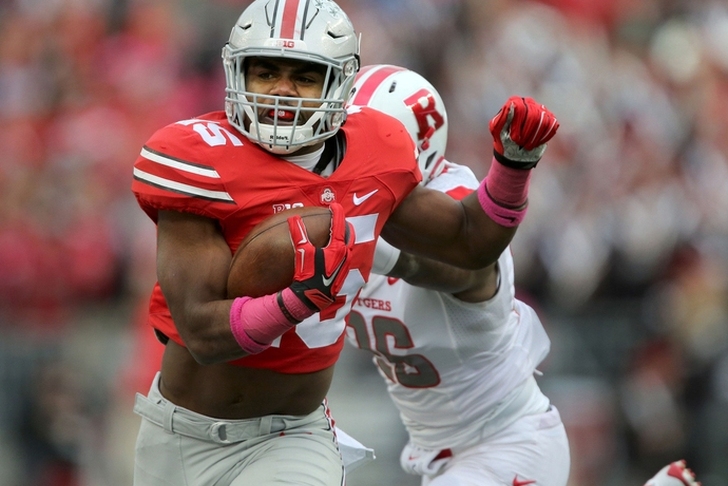The 2016 NFL Draft is still months away, but the NFL has already turned their attention to the offseason and the draft. Many NFL teams could end up taking a running back this year, as more and more teams shift to a running back-by committee approach.
While there are many RB prospects that will be drafted, and even more that sign as undrafted free agents, we've narrowed it down to a dozen. This list could very well change throughout the draft process With that in mind, here are the 12 best running backs in the 2016 NFL Draft.
12. Kelvin Taylor, Florida
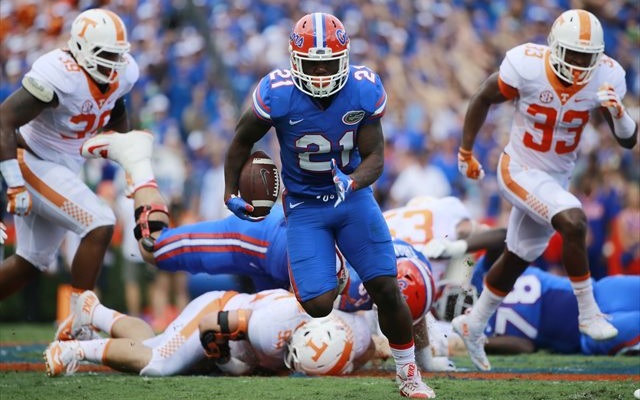
Strengths:
Taylor's father is former NFL RB Fred Taylor. He's quick enough to serve as a quality rotation back and offers value in the passing game. Does a good job of checking his legs moving and does not fumble.
Weaknesses:
He's battled injuries throughout his career. Doesn't have game-breaking ability and doesn't have great size.
Projected Range: Round 4
Taylor is not his father and won't have the same success. He won't be a feature back, but he can contribute several carries per game. He should be a quality No. 2 RB in the NFL.
11. D.J. Foster, Arizona State
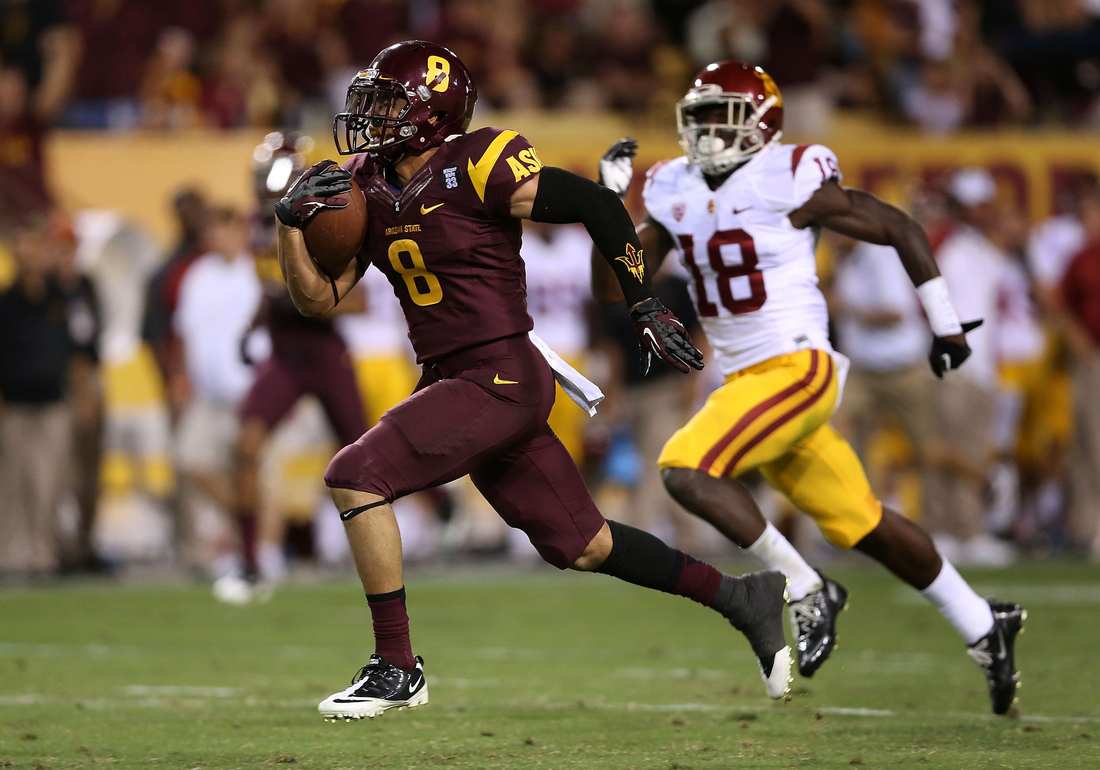
Strengths:
Foster offers great value in the passing game, as he played WR last season. He's a great athlete and is shifty. Is able to keep his legs moving.
Weaknesses:
Lacks ideal size for a RB, but is far too small to play WR. Not playing RB for a season could hurt his development.
Projected Range: Round 4-5
His receiving skills are going to excite NFL teams. But Foster might not be big enough to contribute enough as a full-time back. Worst case scenario, Foster becomes a solid third down back.
10. C.J. Prosise, Notre Dame

Strengths:
Prosise is incredibly versatile. He played mostly defensive back and wide receiver for Notre Dame, before moving to RB last year. He had a great season and has solid size for the position. He showed a natural feel for playing RB in both his vision and running ability.
Weaknesses:
He had issues with fumbles and is still raw as a runner. He runs too upright and that will prevent him from breaking tackles.
Projected Range: Round 3-4
Prosise has upside as a project. At the very least, his pass catching ability will help him become a rotational runner.
9. Kenyan Drake, Alabama

Strengths:
Yet another versatile player, Drake offers great value in the return game. He has great speed and is explosive. Has solid vision and could become an impact player in the right system.
Weaknesses:
Drake had injury problems at Alabama and that's a major red flag. He doesn't have great pass blocking ability and lacks ideal strength.
Projected Range: Round 3
Drake is not an every down back, but he needs touches. He's going to test well and rise as the draft approaches. A Day Two selection is a real possibility. He'll make some team very happy as an explosive, third-down back.
8. Jonathan Williams, Arkansas

Strengths:
He split carries with another Razorback, which means he has fresh legs. He has a thick lower body and will run through arm tackles. He's fast enough to serve as a feature back.
Weaknesses:
A foot injury that cost Williams all of his senior year and most of the Senior Bowl is a serious red flag. He runs too upright.
Projected Range: Round 3-4
The foot injury is ruining Williams' stock. Had he stayed healthy, he might have been a Round 2 pick. Instead, he'll slip in the draft. If he can stay healthy in the NFL, he'll be a quality starter in a running back by committee.
7. Paul Perkins, UCLA

Strengths:
Perkins is a classic power back. He doesn't have blazing speed, but he's fast enough to make in the NFL. He has solid vision and knows how to find a hole.
Weaknesses:
Perkins has a thin lower body, which could prevent him from breaking tackles. He's not terrible on third downs, but needs work in pass protection.
Projected Range: Round 3
Perkins would be a perfect fit in a one-cut offensive system. He's not a perfect back, but has the ability to become an NFL starter. Durability could be an issue.
5. Jordan Howard, Indiana
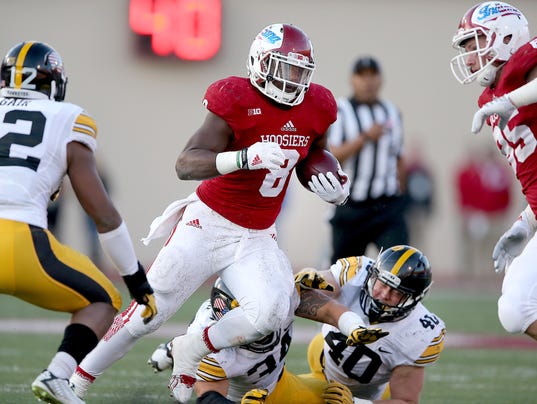
Strengths:
Howard has solid size and profiles as a powerful runner. Doesn't have the best pass catching ability, but is serviceable. Not afraid of contact and will break tackles. Had a great final year at Indiana.
Weaknesses:
Howard battled injuries and his production was inflated by Indiana's scheme. A little too aggressive when running, which could cause more injuries. Doesn't have great speed.
Projected Range: Round 3
Howard might be best as a two-down back, but he's going to be really good on those two downs. However, injuries and durability concerns could drive him down the board.
6. Kenneth Dixon, Louisiana Tech

Strengths:
An underrated back compared to the other big names. Is a tough, north-south runner. He has solid vision and decent size. An above-average pass blocker and can contribute in the passing game.
Weaknesses:
Dixon doesn't have great speed and isn't that elusive. He's had a lot of carries already, which could limit his NFL career. Some minor injuries at Louisiana Tech.
Projected Range: Round 2-3
Dixon might be best in a committee, but he should be a productive pro. Behind a strong offensive line, Dixon could rack up the yards.
4. Devontae Booker, Utah

Strengths:
Booker, at times, was the Utah offense. He has value as a true three-down running back with excellent vision. He makes good cuts and will break tackles.
Weaknesses:
The only major issue with Booker is his speed. He won't be able to break away from defenders at the next level. His pass protection also needs some work. He will be 24, which is old for a RB.
Projected Range: Round 2-3
Booker's age and lack of speed will hurt him, but he'll be productive in the NFL. He can be a workhorse back if needed in the NFL, despite his speed issues.
3. Derrick Henry, Alabama

Strengths:
Henry is tough to bring down and is one of the bigger backs to enter the draft in recent memory. He has good top-end speed and decent vision. But his size and power are his best assets. He's the type of runner who gets better as the game goes along. His pass blocking is great.
Weaknesses:
Henry takes a bit to reach that top speed and doesn't have great burst. He's an upright runner with little ability in the passing game. He struggles when asked to move east and west. He had 395 carries last year, more than any NFL player.
Projected Range: Round 2
Henry reminds me a lot of Brandon Jacobs/LeGarrette Blount. He's a big, strong runner who doesn't have the acceleration others do. He'll best in a power-blocking scheme. He won't be as dominant as he was at Alabama, but he'll find success.
2. Alex Collins, Arkansas
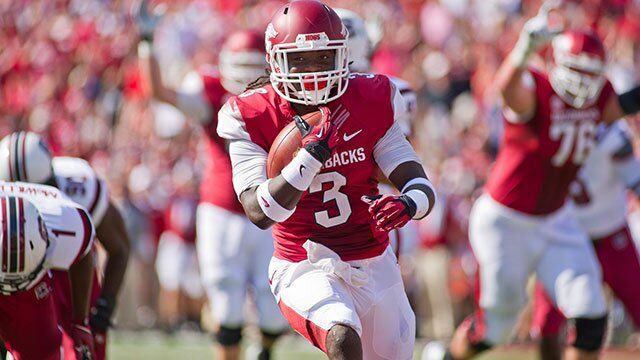
Strengths:
Collins runs hard, and is a classic north-south runner. He has quick cuts and good vision. Collins can contribute in the passing game and is a solid all-around back.
Weaknesses:
Fumbles could be an issue for Collins, and they were at Arkansas. Collins doesn't have the greatest speed.
Projected Range: Round 2-3
Collins might not be a true playmaker, but he's going to be a highly productive back in the NFL. If he holds onto the ball better, he could be an NFL starter.
1. Ezekiel Elliott, Ohio State

Strengths:
Elliott, by far, is the top RB this year. He's a true workhorse back, with speed, power and vision. He's shifty too, and makes strong cuts.
Weaknesses:
There aren't many weaknesses with Elliott, but he needs work as a pass catcher. Ohio State's offense didn't ask him to catch many passes.
Projected Range: Round 1
There's a reason Elliott will go in the first round. Had he played 10 or more years ago, he likely would have been a higher pick. But because teams don't value RBs as much anymore, Elliott will have to settle for a first round selection.
